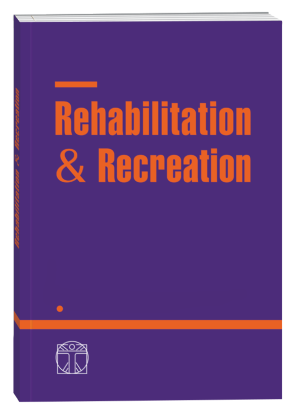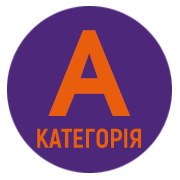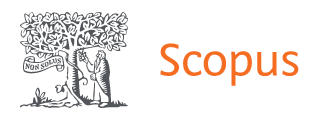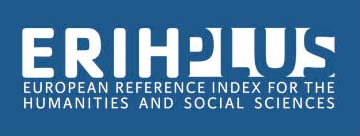DEVELOPMENT OF MOTOR QUALITIES IN YOUNG MEN USING DIFFERENT PARAMETERS OF PHYSICAL ACTIVITY IN HIGHER EDUCATION INSTITUTIONS
DOI:
https://doi.org/10.32782/2522-1795.2024.18.4.10Keywords:
motor qualities, physical education, higher education, young men, somatotypesAbstract
This study attempts to determine the effectiveness of physical activity parameters used by first-year male students with different somatotypes in improving components of physical fitness. The study involved 75 young men aged 17.9±0.4 years, who began their studies at a higher education institution and belonged to various somatotypes. Using random sampling, experimental and control groups were formed for each somatotype. Both groups used the same experimental and traditional factors to ensure the physical activity of the young men. The key difference was that the first factor involved physical loads tailored to the current state of motor quality development in young men of each somatotype, based on the average normative assessments developed by us for this type. The content of the classes was based on the interests and preferences of the students, while the instructor only provided general organization, adjusted some means and methods, and optimized parameters based on the current capabilities of the students. In the control groups, the content consisted of generally accepted load parameters that affected motor qualities, where the level of manifestation differed most from the necessary values according to the recommended age-related normative assessments by researchers. Somatotype was diagnosed using a modified method of Shtefko-Ostrovskiy. Necessary data were collected at the beginning and end of the experiment using the most commonly used tests for assessing various motor qualities in domestic and foreign research. During the academic semester, the experimental groups of young men with A-type and D-type somatotypes improved in 4 motor qualities, while those with T-type and M-type improved in 2 qualities. In contrast, control groups showed improvement in only 1 quality, specifically in A-type and M-type. When comparing the results of the experimental and control groups of specific somatotypes at the end of the study, higher results were observed in the experimental groups: for A-type, there were 2 indicators; for T-type and M-type, there were 3 each; and for D-type, there was 1. In other indicators, the values did not differ. Regardless of somatotype, the experimental factor contributes to a better development of motor qualities in young men than traditional organization and content of university physical education, which do not consider the implementation of a personalized approach based on the characteristics of each somatotype.
References
1. Aндрієвський І.І. Оцінка провідних типологічних характеристик темпераменту, вираженості та особливостей акцентуйованих рис особистості та психодинамічних особливостей особистості у практично здорових жінок без і з урахуванням соматотипу. Вісник Вінницького національного медичного університету. 2021. № 25(3). С. 398–403. doi: https://doi.org/10.31393/reports-vnmedical-2021-25(3)-08.
2. Банах В. Індивідуальний підхід до фізичного виховання студентської молоді. Фізичне виховання, спорт і здоров'я людини. 2019. Вип. 15. С. 11–15. doi: https://doi.org/10.32626/2309-8082.2019-15.11-15.
3. Бєлих С.І. Теоретико-методичні засади особистісно орієнтованого фізичного виховання студентів : монографія. Донецьк : ДонНУ, 2014. 389 с.
4. Бишевець Н.Г., Лазакович Ю.І. Аналіз рухової активності здобувачів вищої освіти в умовах дистанційного навчання. Науковий часопис НПУ ім.
М.П. Драгоманова. 2023. Вип. 5(164). С. 29–32. doi: https://doi.org/10.31392/ NPU-nc.series15.2023.5(164).06.
5. Єдинак Г., Банах В. Підготовка майбутніх фахівців з фізичного виховання та спорту до індивідуалізації і персоналізації параметрів освітнього процесу на основі використання умовних генетичних маркерів. Формування та розвиток здоров`язбережувального середовища в закладах освіти різного рівня : колективна монографія / за заг. ред. І. Стасюка. Кам’янець-Подільський : Кам’янець-Подільський нац. у-тет імені Івана Огієнка, 2024. С. 155–224. URL: http://elar.kpnu.edu.ua/xmlui/ handle/123456789/7700
6. Єдинак Г., Галаманжук Л., Мисів В., Зубаль М., Клюс О. Соматотипи та фізичний стан дітей і молоді : монографія. Кам’янець-Подільський : Друкарня «Рута», 2021. 408 с.
7. Іванюта Н.В., Корюкаєв М.М., Соболенко А.І. Фізична активність як спосіб підвищення академічної успішності студентів. Науковий часопис НПУ імені М.П. Драгоманова. 2024. Вип. 7(180). С. 87–90. doi: https://doi.org/10.31392/ UDU-nc.series15.2024.8(181).16.
8. Інноваційні технології фізичного виховання і спорту : навчальний посібник / уклад. О.В. Юденко. Київ : Нац. ун-т оборони України, 2024. 360 с.
9. Мицкан Т., Єдинак Г., Потапчук С. Акмеологічна компетентність бакалаврів фізичної культури. Вісник Кам`янець-Подільського національного університету імені Івана Огієнка. Фізичне виховання, спорт і здоров`я людини. 2022. Вип. 25. С. 78–88. doi: 10.32626/2309-8082.2022-25.78-88.
10. Asci, F.H., Kin, A., Kosar, S.N. Somatotype as a predictor of psychological characteristics of female university students. Journal of Human Movement Studies, 2001. URL: https://hdl.handle.net/11511/66809
11. Banah, V., Iedynak, G. Status and some prospects of the organization of physical education in higher education institutions. Pedagogy and Psychology of Sport, 2021, 7(2), 114–121. doi http://dx.doi.org/10.12775/PPS.2021.07.02.009 https://apcz.umk.pl/czasopisma/index.php/PPS/article/view/PPS.2021.07.02.009 https://zenodo.org/record/5057492
12. Banakh,V., Iedynak, G., Sovtisik, D., Galamanzhuk, L., Bodnar, A., Blavt, O., Balatska, L., and Alieksieiev, O. Physiological characteristics of young people in the absence of mandatory physical activity required at the university. Physical Education Theory and Methodology, 2023, Vol. 23, Num. 2. 253–262. doi: 10.17309/tmfv.2023.2.14
13. Campa, F., & Greco, G. Growth, Somatic Maturation, and Their Impact on Physical Health and Sports Performance: An Editorial. Int J Environ Res Public Health, 2022, 24, 19(3), 1266. https://doi.org/10.3390/ijerph19031266
14. Chacón, R.G., Núñez-Sánchez, J.M., Ruiz, P.G. Effects of Physical Activity and COVID-19 on Healthy Student Strengths in the University System: Implications for Post-Pandemic Management. European Journal of Investigation in Health Psychology and Education. 2024, 14(1), 243–255. doi: 10.3390/ejihpe14010016
15. Cinarli, F.S., Kafkas, M.E. The effect of somatotype characters on selected physical performance parameters. J. Phys. Educ. Stud, 2019, 23, 279–287.
16. Coulter, T.J., Mallett, C.J., Singer, J.A. & Gucciardi, D.F. Personality in sport and exercise psychology: integrating a whole person perspective. International J of Sport and Exercise Psychology, 2016, 14(1), 23–41. doi.org/10.1080/ 1612197X.2015.1016085
17. D’Anna, C., Forte, P., Pugliese, E. Trends in Physical Activity and Motor Development in Young People – Decline or Improvement ? Children. 2024, 11(3), 298. https://doi.org/10.3390/children11030298
18. Dinparastisaleh, R., Khan, S.A., & Santhanam, P. Body Composition Assessment. In: Ahima, R.S. (eds) Metabolic Syndrome. Springer, Cham, 2023. https://doi.org/10.1007/978-3-031-40116-9_33
19. Eubank, J.M., Oberlin, D.J., Orazem, J. et al. The impact of COVID-19 on college student leisure time physical activity, sedentary behavior, and stress at a Hispanic-serving Institution in New York City. Discov Psychol. 2024, 4(88). https://doi.org/10.1007/s44202-024-00200-y
20. Eurofit Fitness Testing Battery. URL:https://www.topendsports.com/testing/eurofit.htm
21. Fitness testing. URL: https://www.teachpe.com/training-fitness/fitness-testing
22. Frąckiewicz, M. Personalized Learning for Sports and Physical Education, 2023. URL: https://ts2.com.pl/en/personalized-learning-forsports-and-physical-education/
23. Furman, Y.M., Miroshnichenko, V.M., Boguslavska, V.Yu., Gavrilova, N.V., Brezdeniuk, O.Yu., Salnykova, S.V., Holovkina, V.V., Vypasniak, I., Lutskyi V. Modeling of functional preparedness of women 25–35 years of different somatotypes. Pedagogy of Physical Culture and Sports, 2022, 26 (2), 118–125. https://doi.org/10.15561/26649837.2022.0206
24. Iedynak, G., Galamandjuk, L., Kyselytsia, O., Nakonechnyi, I., Hakman, A., Chopik, О. Special aspects of changes in physical readiness indicators of young men with different somatotypes between 15 and 17 years of age. J of Physical Education and Sport, 2017, 17(4), 2690–2696. doi:10.7752/jpes.2017.04311
25. Khawaja, S., Anjos, E., and Qureshi, F. The Impact of the Pandemic (COVID-19) on Higher Education Students: Challenges, Adaptations, and Future Perspectives. Creative Education. 2023, 14, 2207–2227. doi: 10.4236/ce.2023. 1411140.
26. Khomenko, I.M., & Shevchuk, T.V. The formation of morpho-functional readiness and peculiarities of student adaptation processes at the graduate stage of education in institution of higher education. Reports of Vinnytsia National Medical University. 2023, 27(3), 474–482. https://doi.org/10.31393/reportsvnmedical-2023-27(3)-20
27. Martynova, N., Khotiienko, S., Prysiazhna, M. Strength training as a means of increasing motor activity of female students of higher education institutions during distance learning. Вісник Луганського національного університету імені Тараса Шевченка. Педагогічні науки. 2023, № 1(355), 130–135. URL: http://hdl.handle.net/123456789/9772
28. Miroshnichenko, V.M., Furman, Y.M., Bohuslavska, V.Yu., Brezdeniuk, O.Yu., Salnykova, S.V., Shvets, O.P., Boiko, M.O. Functional preparedness of women of the first period of mature age of different somatotypes. Pedagogy of Physical Culture and Sports, 2021, 25(5), 296–304. https://doi.org/10.15561/26649837.2021.0504
29. Motevalli, M., Drenowatz, C., Wirnitzer, K.C. D., Tanous, R., Wirnitzer, G., Kirschner, W., Ruedl, G. Changes in physical activity during the COVID-19 lockdown based on the sociodemographic profile of 5569 students and academic staff of Austrian universities. Public Health. 2023, 219, 102-109. https://doi.org/10.1016/j.puhe.2023.04.003
30. Mukan, N., Gorokhivska, T., Banakh, V., Iyevlyev, О. Testing of students’ static balance development in physical education: ICT application. J of Physical Education and Sport, 2021, Vol 21 (Suppl. issue 5), 3068-3074, doi:10.7752/jpes.2021.s5408
31. Personalized System. Instruction in Physical Education. URL: https://plt4m.com/blog/personalized-system-of-instruction/
32. Schmidt, R.A., & Lee, T. Motor learning and performance: from principles to application. Champaing, IL: Human Kinetics, 2018.
33. Silventoinen, K., Maia, J., Jelenkovic, A., Pereira, S., Gouveia, É., Antunes, A., Thomis, M., Lefevre, J., Kaprio, J., & Freitas, D. Genetics of somatotype and physical fitness in children and adolescents. Am J Hum Biol, 2021, 33(3), e23470. https://doi.org/ 10.1002/ajhb.23470
34. Terrell, S. What You Need to Know About Your Somatotype to Master Your Body. January 31, 2019. URL: https://blog.mindvalley.com/somatotype/
35. Thomas, J.R., Nelson, J.K., & Silverman, S.J. Research methods in physical activity. 6th ed. Champaign, IL: Human Kinetics, 2015.
36. UNESCO Fit for Life. UNESCO 2022. URL: https://www.unesco. org/en/sport-andanti-doping/fit4life (accessed on 3 December 2023).
37. Weir, J.P., Vincent, W.J. Statistics in Kinesiology. Champaign: Human kinetics, 2020.
38. Wilmore, J.H., Costill, D.L., & Kenney, L.W. Physiology of sports and exercise. 5th ed. Champaign, IL: Human Kinetics, 2022.
39. Yelizarova, O., Stankevych, T., Parats, A., Polka, N., Lynchak, O., Diuba, N., Hozak, S. The effect of two COVID-19 lockdowns on physical activity of school-age children. Sports Med. Health Sci. 2022, 4, 119–126. https://doi.org/10.1016/ j.smhs.2022.01.002
40. Young, A. (2019). Personalized System of Instruction in Physical Education. International J of Arts and Humanities. 2019, 5(1), 13–15.
41. Zavydivska, N., Zavydivska, O., & Khanikiants, O. (2019). Features of free time pedagogy in the conditions of health preserving study of students. Kamianets-Podilskyi Ivan Ohiienko National University. Physicaleducation, sports and human health, 13, 15–22. https://doi.org/10.32626/2309-8082.2019-13 .15-22.
Downloads
Published
How to Cite
Issue
Section
License

This work is licensed under a Creative Commons Attribution-NonCommercial-NoDerivatives 4.0 International License.












